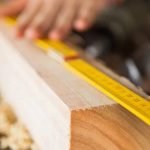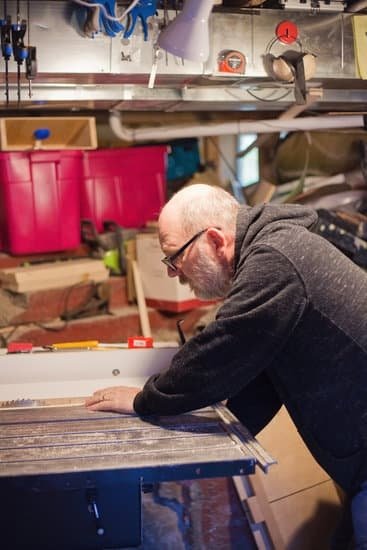Woodworking is a craft that requires precision, skill, and attention to detail. However, one often overlooked aspect of woodworking is the potential threat of termites. These tiny insects can wreak havoc on woodwork, causing extensive damage if left untreated. In this article, we will delve into the importance of treating wood for termites before embarking on any woodworking project.
Termites pose a significant danger to woodwork due to their ability to consume cellulose-based materials like lumber and furniture. Left unchecked, termite infestations can lead to weakened structures, compromising the integrity of your woodworking projects. This makes it crucial to take preventive measures by treating wood for termites before starting any woodworking endeavor.
By understanding the devastating effects of termites on woodwork, you can better appreciate why treatment is essential for long-lasting results. From hollowing out wooden beams to completely destroying intricate designs, termites can render your hard work useless in no time. Therefore, being proactive in addressing termite prevention from the beginning will save you time, effort, and money in the long run.
Identifying termite infestations is another critical aspect of protecting your woodwork. By learning to recognize the signs of a potential problem early on, you can take swift action and minimize damage. We will guide you through a step-by-step inspection method that will help you determine if your wood is at risk and what course of treatment is necessary.
The Dangers of Termites
Termites are small insects that feed on wood and can cause significant damage to wooden structures, including woodworking projects. Understanding the dangers of termites is crucial for anyone involved in woodworking, as it can help prevent costly repairs and ensure the longevity of your woodwork.
Termites have the potential to wreak havoc on woodwork due to their feeding habits. They consume cellulose, a major component of wood, which weakens its structural integrity over time. This can lead to structural damage, warping, and even complete destruction of wooden furniture, cabinets, flooring, and other woodworking projects.
One of the most devastating effects of termite infestations is the compromise in structural stability. As termites eat away at the wood, they create tunnels and galleries within it. This weakens the overall structure and can result in collapse or failure of the woodwork. In extreme cases, this can pose risks to people’s safety if a weakened structure were to give way.
Aside from compromising structural integrity, termite infestations can also result in financial losses. Repairing or replacing damaged wooden structures or furniture due to termite damage can be quite expensive. Additionally, if left unaddressed, termites can spread to other areas of your home or workshop, causing further damage and increasing repair costs.
| Effect | Description |
|---|---|
| Structural Damage | Termites weaken the structure of wooden objects by creating tunnels and galleries within them. |
| Warping | The feeding activity of termites can cause wood to warp or distort. |
| Total Destruction | If left untreated, termites can completely destroy wooden objects, requiring replacement. |
Recognizing the potential dangers of termites on woodwork is essential for woodworking enthusiasts and professionals alike. By understanding their impacts, individuals can take the necessary steps to prevent termite infestations and protect their valuable wooden creations.
Identifying Termite Infestation
Termites can cause significant damage to woodwork if not detected and treated early on. It is important for woodworkers to be able to identify the signs of a termite infestation in order to address the issue before it becomes a bigger problem. By recognizing these signs, woodworkers can take appropriate steps to prevent further damage and protect their wood projects.
One of the most common signs of a termite infestation is the presence of mud tubes. Termites use these tubes as a way to travel between their nest and their food source, which is often wood. These tubes are typically brown or tan in color and may be found on walls, floors, or other wooden surfaces. If you come across these mud tubes, it is likely that termites are present and action should be taken.
Another sign of a termite infestation is the presence of winged termites, also known as swarmers. These are adult termites that have left the colony in search of new locations to establish themselves.
Swarming termites are usually seen around windowsills or light sources, and they tend to shed their wings once they find a suitable spot. If you spot winged termites or discarded wings in your workspace or around your home, it is a clear indication that there is a termite problem.
Wood damage is another telltale sign of termite infestation. Termites feed on cellulose found in wood, causing hollowing out or blistering effects on wooden surfaces. This can result in weakened structures that may eventually collapse if left untreated. Look for areas where the wood appears swollen or has maze-like patterns on its surface – these could indicate termite feeding activity.
| Sign | Description |
|---|---|
| Mud tubes | Brown or tan tubes used by termites for travel |
| Winged termites | Adult termites with wings, often seen near windows or light sources |
| Discarded wings | Shed wings left behind by swarmers after finding a suitable spot |
| Wood damage | Hollowed out or blistered wood surfaces with maze-like patterns |
By recognizing these signs of termite infestation, woodworkers can take immediate steps to address the problem and safeguard their wood projects from further damage.
Step-by-Step Guide
Step 1: Visual Inspection
Before starting any woodworking project, it is important to visually inspect the wood for any signs of termite infestation. Start by examining the surface of the wood for small holes or tunnels, which are typically created by termites as they burrow through the wood. Look for any cracked or damaged areas that may indicate termite activity.
Additionally, keep an eye out for mud tubes, which termites use to travel from their nests to their food sources. These tubes are usually brown in color and can be found on the exterior surface of the wood.
Step 2: Probe Testing
In addition to a visual inspection, it is important to perform a probe test on the wood to determine if it has been infested by termites. Use a screwdriver or a sharp object to gently probe the surface of the wood in various areas. If you encounter soft or hollow spots during probing, this could be a strong indication of termite presence. Termites often hollow out the interior of wooden structures while leaving only a thin layer on the outside.
Step 3: Listening Test
Another method to detect termite infestation is by listening closely to the sound produced when tapping on the wood. Tap different sections of the wood with a hard object and listen for any hollow sounds or a papery rustling noise. These sounds may indicate that termites have consumed part of the wood from within, leaving behind fragile empty spaces.
By following these step-by-step inspection methods, you will be able to identify whether your wood material is affected by termites before beginning any woodworking project. This proactive approach will help you prevent further damage and preserve the integrity and longevity of your woodwork. Remember that early detection is key in tackling termite infestations effectively and efficiently.
Natural Approaches for Termite Prevention
Termites can cause significant damage to woodwork, leading to costly repairs and replacements. While chemical treatments are effective in warding off termites, many individuals are increasingly concerned about the potential environmental impacts of these methods. Fortunately, there are several natural approaches that can be used to prevent termite infestations while minimizing harm to the environment.
One effective eco-friendly option for termite prevention is the use of physical barriers. These barriers create a protective layer between the soil and the wood, preventing termites from gaining access. Some commonly used physical barriers include stainless steel mesh, crushed rock, or sand. These materials can be placed around the foundation of a structure or underneath wooden structures such as decks or sheds to deter termites from entering.
Another natural approach is using certain types of wood that are naturally resistant to termite infestations. Some examples include redwood, cedar, and cypress. These types of wood contain natural oils and chemicals that make them less appealing to termites. Additionally, treating wood with natural substances like borate can also provide protection against termites. Borate is a mineral salt that acts as a deterrent by making the wood toxic to termites.
In addition to physical barriers and resistant types of wood, regular maintenance and inspections play a crucial role in termite prevention. By keeping your property well-maintained, fixing any water leaks promptly, and ensuring proper drainage around your home’s foundation, you can eliminate conditions that may attract termites.
Regularly inspecting your property for signs of termite activity such as mud tunnels or discarded wings can help you detect an infestation early on and take appropriate measures before extensive damage occurs.
By exploring these eco-friendly options for termite prevention, individuals engaged in woodworking projects can protect their creations while being mindful of the environment. Natural approaches like physical barriers, using resistant types of wood, and regular maintenance and inspections can provide effective protection against termite infestations. It is important to remember that prevention is key when it comes to termites, as the damage they can cause to woodwork can be devastating and costly to repair.
Chemical Treatments
When it comes to treating wood for termites before woodworking, chemical treatments are among the most effective solutions available. These treatments are designed to not only kill existing termites but also prevent new infestations from occurring. In this section, we will explore some of the commonly used chemical treatments and their effectiveness in warding off termites from wood.
Termite Control Products
One popular type of chemical treatment for termite control is liquid insecticides. These products are typically applied directly onto the wood or surrounding areas where termite activity has been identified. Liquid insecticides can create a protective barrier that termites cannot penetrate, effectively preventing their entry into the wood. Some common types of liquid insecticides include imidacloprid, fipronil, and cypermethrin.
Another effective chemical treatment option is termite baits. These baits contain slow-acting toxins that are ingested by worker termites and then spread throughout the colony, eventually leading to its elimination. Termite baits are especially helpful in cases where it may be difficult to locate the main nest or where direct application of liquid insecticides is not feasible.
Professional Application
It is important to note that while some chemical treatments can be purchased and applied by homeowners themselves, others may require professional assistance due to their potency or specialized application techniques. Professional pest control companies have access to a wider range of chemical treatments and expertise in identifying and treating termite infestations. They can thoroughly assess your woodwork, determine the appropriate chemical treatment, and ensure its proper application for maximum effectiveness.
Additionally, professional application of chemical treatments may come with warranty agreements that provide ongoing protection against future termite infestations. This can give homeowners peace of mind knowing that their woodwork is being safeguarded by experts.
DIY Methods
Woodworkers who are proactive about termite control can save themselves a lot of headache and potential damage to their projects. While there are professional treatments available, many individuals prefer to take matters into their own hands and treat wood for termites at home using DIY methods. These do-it-yourself solutions can be effective if done correctly and consistently.
One popular DIY method for treating wood for termites is the use of orange oil. Orange oil contains an active compound called d-limonene, which is toxic to termites on contact. To use orange oil, simply apply it directly onto the infested wood or inject it into termite galleries using a syringe.
Another commonly used home remedy is the use of neem oil. Neem oil is derived from the seeds of the neem tree and has insecticidal properties. It disrupts the feeding and molting process of termites, eventually leading to their death. To utilize neem oil, mix it with water according to the manufacturer’s instructions and spray it onto the infested wood.
Additionally, boric acid can be an effective DIY treatment for termite-infested wood. Boric acid works by dehydrating termites and disrupting their digestive system when ingested. To use boric acid, mix it with water to create a solution and apply it onto the affected wood. Make sure to wear protective gloves when handling boric acid.
While these DIY methods can be useful for minor termite problems, it’s important to keep in mind that they may not provide long-term protection or eradicate a large infestation completely. It’s always recommended to consult with a professional if you suspect a severe termite problem or if your DIY efforts prove ineffective.
By learning how to treat wood for termites at home using DIY methods, woodworkers can take proactive steps towards protecting their projects from potential termite damage. However, it’s crucial to remember that prevention is key and routine inspections and maintenance should also be implemented to ensure the long-term preservation of woodwork.
Expert Recommendations
When it comes to termite control, seeking professional assistance and advice is highly recommended. While there are some steps that you can take on your own to treat wood for termites, consulting with experts in the field can provide you with a more comprehensive and effective solution. Professionals have the knowledge, experience, and specialized tools to identify termite infestations accurately and develop targeted treatment plans.
One of the first actions you should take when dealing with a termite problem is to contact a licensed pest control company. These professionals are trained in inspecting homes and structures for termites and implementing appropriate measures in terms of prevention, extermination, and protection. By hiring experts, you can ensure that your woodworking projects are not compromised by termites or potential damage caused by these pests.
Additionally, professionals can provide valuable advice on preventive measures you can take to deter termites from infesting your woodwork in the first place. They will guide you through proper maintenance techniques, such as sealing any cracks or gaps in wooden structures that may serve as entry points for termites. They may also suggest regular inspections to catch any signs of termite activity early on.
It is important to note that professional assistance does come at a cost. The fees charged by pest control companies may vary depending on factors such as the size of your property and the level of infestation. However, considering the potential damage that termites can cause to your woodwork and home, investing in expert recommendations becomes a wise decision to protect your investment in the long run.
To summarize:
– Contact a licensed pest control company for professional assistance.
– Professionals have the expertise to accurately identify termite infestations.
– Experts can develop targeted treatment plans and offer preventive measures.
– Consider the cost as an investment in protecting your woodwork from termite damage.
Best Practices
Woodwork is a craft that requires time, effort, and precision. Whether you’re building furniture, creating decorative pieces, or renovating your home, it’s crucial to maintain and protect your woodwork from termites. By implementing best practices for maintenance and conducting routine inspections, you can preserve the beauty and durability of your creations.
One key aspect of maintaining your woodwork is to regularly clean and dust the surfaces. Dust accumulation can create a favorable environment for termites as they thrive in dark, moist areas. Use a soft cloth or brush to remove any particles from the wood surfaces. Additionally, keep the area surrounding your woodwork clean and free of clutter to minimize potential hiding spots for termites.
Inspecting your woodwork on a regular basis is vital to catch any signs of termite activity early on. Look for hollow spots or areas where the wood feels weak when tapped. Squeeze wooden joints gently to check for any signs of damage or looseness. Keep an eye out for small holes in the wood that may indicate termite tunnels or exit points. If you notice any suspicious signs, it’s essential to take immediate action.
To further protect your woodwork from termites, consider using preventive measures such as applying sealants or finishes specifically designed to repel these pests. These products create a protective barrier on the surface of the wood, making it less attractive to termites. Be sure to choose environmentally friendly options that are safe for both you and the environment.
By incorporating these best practices into your woodworking routine and conducting routine inspections, you can effectively preserve your woodwork and safeguard it against termite damage. Remember that prevention is key when it comes to termite control. The earlier you detect an infestation or potential problem, the easier it will be to address it before irreversible damage occurs.
Conclusion
In conclusion, it cannot be stressed enough how crucial it is to treat wood for termites before embarking on any woodworking project. The devastating effects of termite infestations on woodwork can cause irreparable damage and can even compromise the structural integrity of the finished products. By being proactive in termite prevention and treatment, woodworkers can ensure that their creations stand the test of time.
Throughout this article, we have explored the dangers of termites and the signs to look out for when identifying a potential problem. We have provided a step-by-step guide on how to inspect wood for termites before starting woodworking projects, as well as discussed natural approaches and chemical treatments for termite prevention. We have also delved into DIY methods and expert recommendations for effective termite control.
However, it is important to note that while these measures are effective, they may not always be enough to completely eradicate or prevent termite infestations. Seeking professional assistance and advice in termite control is highly recommended, especially if the infestation is severe or persistent. A professional exterminator will have access to stronger chemicals and advanced techniques that can effectively eliminate termites from your woodwork.
To ensure the longevity of your woodwork, regular maintenance and routine inspections are essential. By regularly checking for signs of termite activity and promptly addressing any issues that arise, you can preserve the beauty and functionality of your creations for years to come.
In summary, treating wood for termites before woodworking should be considered an indispensable part of any project. By understanding the importance of proactive termite treatment, implementing preventative measures, seeking professional assistance when needed, and practicing routine maintenance, woodworkers can safeguard their work from the devastating effects of these destructive pests.

Hi everyone! I’m a woodworker and blogger, and this is my woodworking blog. In my blog, I share tips and tricks for woodworkers of all skill levels, as well as project ideas that you can try yourself.





